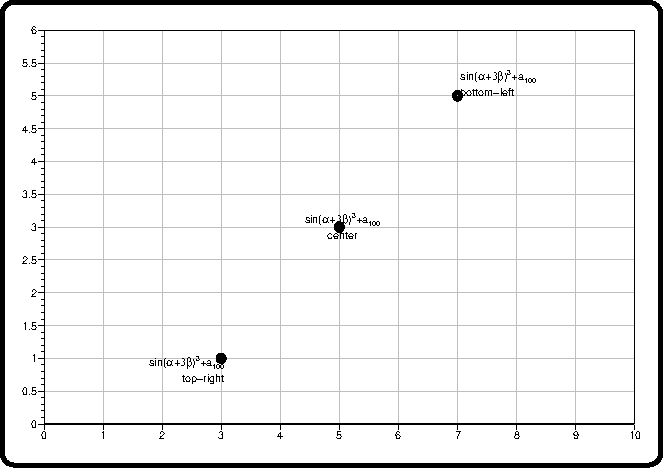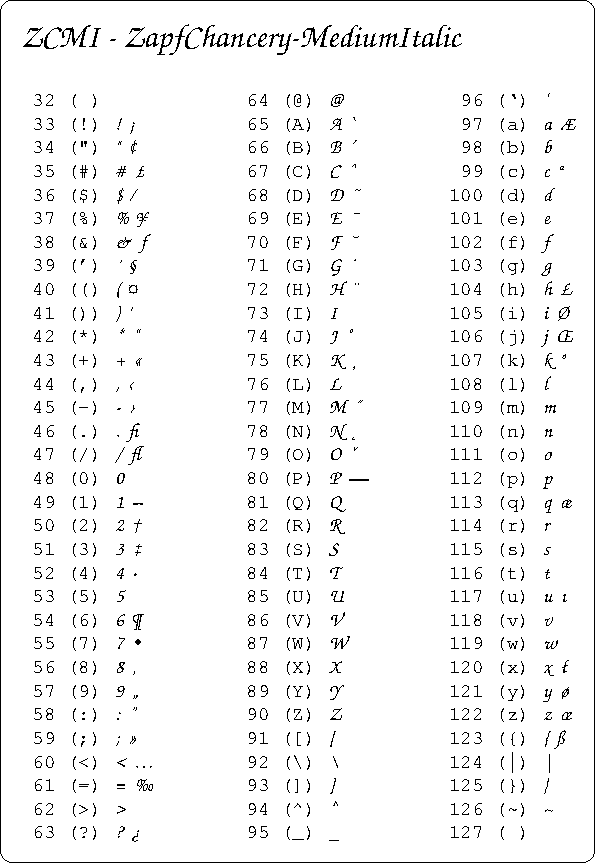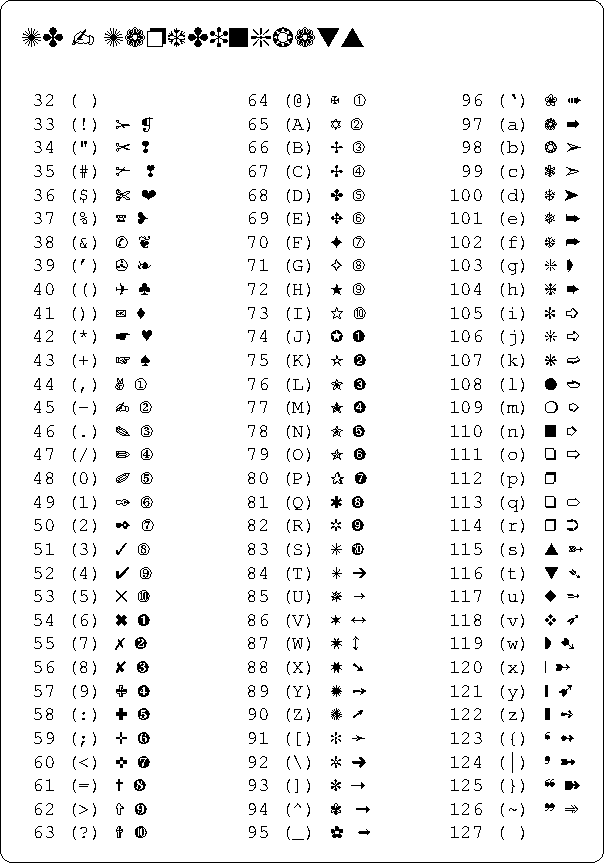plformat
plot text by extended C-formatstring with various justifications
| parameter | type | units | description |
|---|---|---|---|
| leftright | float | text | horizontal shift |
| updown | float | text | vertical shift |
| format | char* | -- | any standard C-format |
| returns: | void |
Description
plformat plots formatted data centered at the current position, shifted by (leftright,updown ) text unit relative to the center. Text units are the length and height of the text. Thus leftright =updown =0,5 places the lower left of the text box at the current position. format can be any valid C-language format string. As expected, the sequence \n inserts a newline, that is: a new line of text is started below the initial position. Some symbols: @ ^ _ # \ and % will be output only if they are doubled. For the latter two this is obvious as it is imposed by the C-compiler. The first four have a special significance:- @ (at_sign)
- toggles between initial and alternate font (see plinit)
- ^ (uparrow)
- toggles between normal/subscript and superscript
- _ (underscore)
- toggles between normal/superscript and subscript
- # (hash_mark)
- toggles between lower and upper ASCII table
Examples
The following script shows how text can be justified relative to the current point:plinit PS plformat A4 15 15 "" "" plset XGRID 1 plset YGRID 1 plaxes 0 0 10 6 150 100 "" "" "" plrect 0 0 10 6 plset PENDIA 1 s=.5 a=360 r=.05 plot 7 5 UP plarc 7 5 r 0 a DOWN plformat s s sin(@a+3b@)3^+a_%d_\nbottom-left 90 plot 5 3 UP plarc 5 3 r 0 a DOWN plformat 0 0 sin(@a+3b@)3^+a_%d_\ncenter 90 plot 3 1 UP plarc 3 1 r 0 a DOWN plformat -s -s sin(@a+3b@)3^+a_%d_\ntop-right 90 plframe 5 3

#include <stdio.h>
#include <string.h>
#include <simplot.h>
int main() {
int i,j,k,nf=4,ifont;
float x,y;
char *font[]={"H","S","ZCMI","ZD"};
char *fontname[]={"Helvetica",
"Symbol",
"ZapfChancery-MediumItalic",
"ZapfDingbats"};
for (ifont=0;ifont<nf;ifont++) {
plinit(PS,font[ifont],A4,25,269,"C",font[ifont]);
plset(HEIGHT,5);
plfont(); // switch to alt font
plformat(.5,.5,"%s - %s",font[ifont],fontname[ifont]);
plfont(); // back to normal font
plmvorgm(0,-15);
plset(HEIGHT,3);
for (i=32;i<128;i+=32) {
x=(i-32)*1.7;
for (j=0;j<32;j++) {
y=-j*6;
k=i+j;
plu(x,y);
if (strchr("@^_#",k)) // these chars must be doubled
plformat(.5,.5,"%3d (%c%c)@ %c%c # %c%c",k,k,k,k,k,k,k);
else
plformat(.5,.5,"%3d (%c)@ %c # %c",k,k,k,k);
// # must be followed by space, else we get # instead of shifted #
}
}
plframe(5,3);
plend();
}
exit(0);
}




